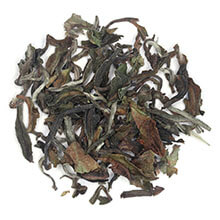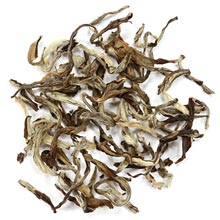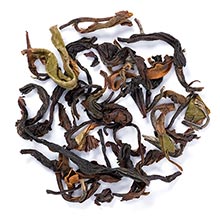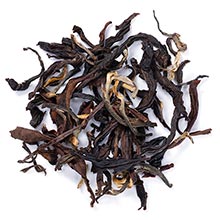The Best Darjeeling Black Teas from India
by Abby Morrison
March 28, 2023

What is it?
There are a lot of ways to name a tea. Some, as is often the case with herbal teas, are named for their ingredients, like chamomile or mint. Other tea names give nods to their origin or purpose, like Earl Grey or Irish Breakfast. Some give descriptions of the tea's appearance, like Jasmine Phoenix Pearls or Golden Monkey, and still others, similar to Champagne, are named for the location in which the components are grown. Such is the case with today's tea, often referred to as the champagne of teas, Darjeeling.
Darjeeling refers to teas grown in the Darjeeling and Kalimpong districts of India. Like most teas, it is grown in multiple flushes throughout the year, with the first flush being the most highly prized for its more delicate flavor. Changes in the growing season also affect the flushes, meaning many different flavor profiles can be achieved all under the umbrella of the name Darjeeling. This affects the appearance of the final teas as well, with some Darjeeling teas featuring more open or spindly or more green or dark leaves.
At Adagio we have many options for Darjeeling teas, including some from our Masters Teas collection.

Preparation and Taste
Given that there are many kinds of Darjeeling teas, including black, green, white, and oolong, there is no one-size-fits-all when it comes to steeping times and temperatures. It is important to follow the steeping time and temperature provided with your individual tea. It is likewise difficult to provide an exact flavor and aroma profile for Darjeeling as a whole, though generally speaking earlier flushes will have more delicate, astringent, and floral hints and later flushes will grow into a deeper, fruitier muscatel (a type of grape) flavor.That being said, there are a few general guidelines that can be given. First, on account of its complex and delicate flavor, Darjeeling is best enjoyed without the addition of cream, sugar, or other dairy or sweetening products. Likewise, given that many of the leaves and buds are still curled, consider using an infuser that has plenty of space for the leaves to open.

Flavor Pairings
As above, it is not always easy to pair Darjeeling to any one given flavor, given the wide variety of profiles it has. That being said, given its astringency and richer flavors, it's probably best to avoid super light and some citrusy or floral flavors, which might be overrun by the tea's flavor. Given its richness, it can pair well with richer foods, like pastas or certain lighter meats. Take care to note the flavors in your specific cup and you may find some surprising combinations.Recipes
If you'd like to take a step further and incorporate Darjeeling into some of your meals more directly, TeaChef has some options available. Try recipes for Darjeeling Braised Pork, Darjeeling Chai Oatmeal, a Darjeeling Mango Mosaic Cake, and more.
Similar Teas
Given the wide range of flavors available, if you like a Darjeeling tea that you try, our first recommendation is to try another one! With over ten varieties to try, you just might find a new favorite. From there, it's easy to branch out depending on the type of Darjeeling that you've tried. Try other black, white, green, or oolong teas, or go by specific flavors in the taste. Our Pu Erh teas have depth and earthiness, white teas feature light and floral flavors, and black and flavored teas can give you that fruity or astringent taste. With tea, the sky is always the limit!We hope you've enjoyed this deep dive into Darjeeling. As you venture out into the world of the champagne of teas, make sure to let us know what you think on social at @adagioteas.